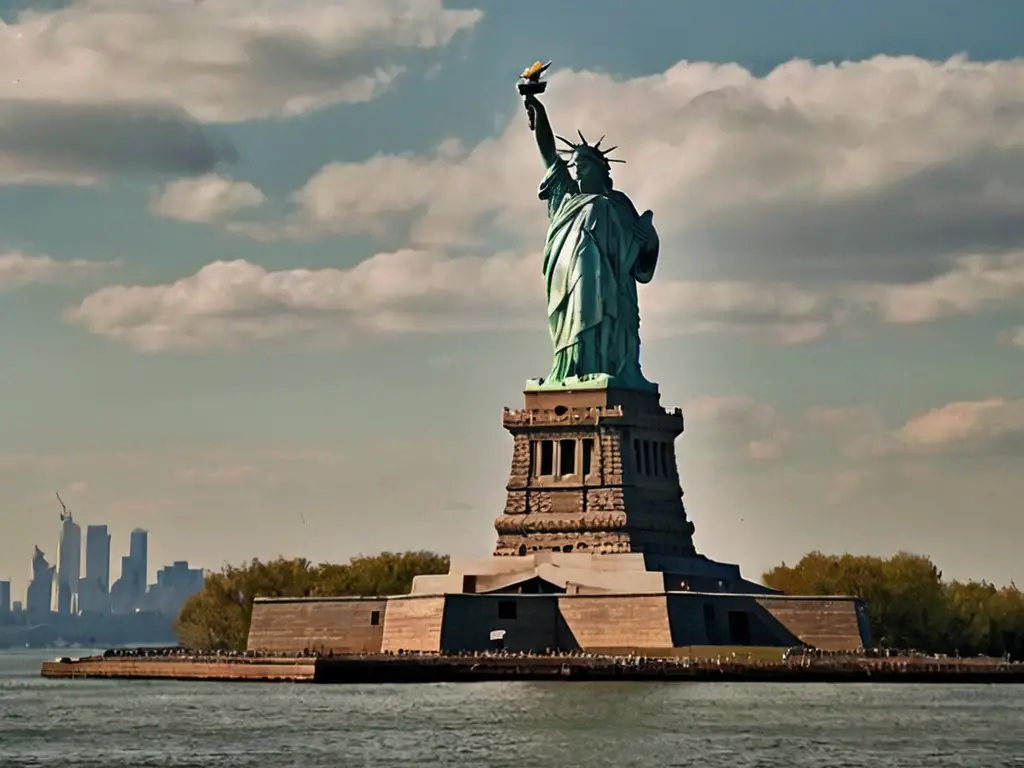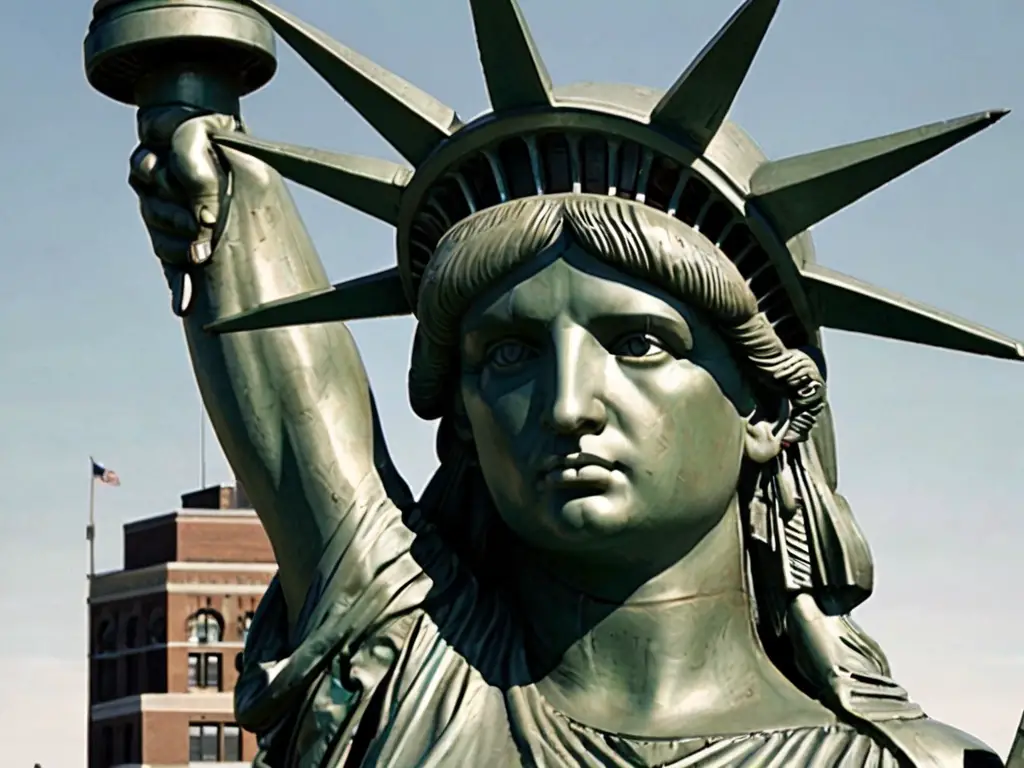The Statue of Liberty is one of the most recognizable landmarks in the United States. It has been a symbol of freedom and democracy since it was first erected in 1886. However, the statue has also been the target of several attacks throughout its history.
In 1916, a German spy named Karl Berg scaled the statue and tried to plant a bomb at the base. Fortunately, the bomb did not go off, and Berg was apprehended before he could do any further damage. More recently, in 2001, Al-Qaeda terrorist Abu Dhabi tried to blow up the statue with explosives hidden in his shoes.
Attacks that Almost Happened: Unsuccessful Attempts
Throughout history, there have been numerous instances of planned attacks that were thwarted just in time, preventing potential disasters. These unsuccessful attempts range from terrorist plots to assassinations and cyber-attacks. For instance, the 2006 transatlantic aircraft plot aimed to detonate liquid explosives on board multiple commercial airlines traveling from the UK to North America.
However, British police foiled the plot before it could be executed. Similarly, in 2010, an attempted car bombing in Times Square was averted when street vendors noticed smoke emanating from a parked vehicle and alerted authorities. In another case, an assassination attempt on Queen Victoria was prevented when a teenager’s gun misfired twice. These near-miss incidents serve as stark reminders of the constant threats faced by societies worldwide and highlight the importance of vigilance and effective security measures.
A Symbol of Freedom: Why the Statue of Liberty is a Target
The Statue of Liberty, standing tall on Liberty Island in New York Harbor, is a universal symbol of freedom and democracy. However, its iconic status also makes it a potential target for those who wish to undermine these values. The statue represents the very ideals that some groups oppose – liberty, freedom, and the pursuit of happiness.
Its destruction would not only be a physical loss but also an attack on the principles it embodies. Therefore, while it stands as a beacon of hope and opportunity for many around the world, its symbolic significance also renders it vulnerable to threats from those who seek to challenge or disrupt these fundamental democratic values.

Credit: www.nbcnews.com
Has the Statue of Liberty Been Bombed?
No, the Statue of Liberty has not been bombed. However, it was vandalized in 1916 by a German immigrant named Karl Helfrich. Helfrich scaled the statue and chipped away at the torch with a hammer and pickaxe. He was arrested and later committed suicide in prison.
When Did the Statue of Liberty Get Attacked?
In 1886, the Statue of Liberty was given to the United States by France as a symbol of friendship between the two nations. The statue became an instant icon, and over the years, it has been attacked several times. The first recorded attack on the Statue of Liberty occurred in 1916 when German saboteurs tried to blow it up.
The explosion did not do much damage to the statue, but it did shatter some of the windows in nearby buildings. In 1932, a man named Robert Bartholomew attempted to scale the statue with dynamite strapped to his back. He was stopped before he could reach the top, and no damage was done to the statue.
In 1954, three Puerto Rican nationalists tried to fly a plane into the statue in an attempt to destroy it. They were unsuccessful and only managed to damage one of its feet. More recently, in 2001, someone fired seven shots at the statue with a rifle; however, none of them hit their target, and there was no significant damage done. Overall, even though it has been attacked several times throughout its history, the Statue of Liberty still stands tall as one of America’s most iconic symbols.

How Many Times Has the Statue of Liberty Been Hit by Lightning?
The Statue of Liberty is one of the most iconic structures in the United States. Standing at 305 feet tall, it is hard to miss. The Statue of Liberty has been hit by lightning numerous times throughout its history. In fact, it is hit by lightning more than any other structure in the United States. The first recorded instance of the Statue of Liberty being hit by lightning was on July 28, 1885. A severe thunderstorm swept through New York City, and a bolt of lightning struck the statue.
The force of the strike was so strong that it knocked out one of the torch’s lights. There have been several other instances where lighting has struck the torch, but none have been as damaging as that first strike. While the torch is usually the target for lightning strikes, the rest of the statue is not immune.
In 1916, another severe thunderstorm passed over New York City, and this time, four bolts of lightning struck different parts of the statue. One bolt hit near the base and caused minor damage to one of Lady Liberty’s feet. There have been no recorded instances of anyone being harmed by these strikes, but that doesn’t mean they’re not dangerous.
Lightning is incredibly powerful and can cause serious damage to both people and property. If you’re ever caught in a thunderstorm near tall structures like the Statue of Liberty, be sure to take shelter immediately!

Was the Statue of Liberty Damaged in 1916?
The Statue of Liberty was not damaged in 1916. However, the torch that she holds was badly damaged in the fire that broke out at the base of the statue on Liberty Island that year.
What If The Statue Of Liberty Was Attacked?
Frequently Asked Questions [FAQs]
Was the Statue of Liberty ever attacked?
Yes, there was an attempted attack on the Statue of Liberty in 1916 by German agents.
What happened during the attack attempt?
On July 30, 1916, during World War I, German saboteurs set off an explosion on Black Tom Island, which was located near Liberty Island, where the Statue of Liberty stands. The explosion caused significant damage to the nearby areas, including the Statue of Liberty.
What was the extent of the damage to the Statue of Liberty?
Although the statue itself wasn’t directly hit, it suffered some damage from the explosion. The torch-bearing arm of the statue sustained minor damage, including cracks and holes.
Why did the Germans target the Statue of Liberty?
The Germans targeted Black Tom Island because it was a major munitions depot supplying Allied forces during World War I. The explosion was intended to disrupt the supply of weapons and ammunition to the Allies.
Was anyone injured or killed during the attack attempt?
Yes, the explosion resulted in casualties and injuries. At least seven people were killed, and hundreds were injured. The blast was so powerful that it shattered windows in Manhattan, miles away from the site.
Conclusion
The Statue of Liberty was never actually attacked, but it did come close a few times. In 1916, a German submarine fired a torpedo at an American ship that was passing by the statue but missed. In 1937, another German submarine surfaced near the statue and fired shots at it but again missed. The closest the statue came to being attacked was on September 11th, 2001, when one of the hijacked planes crashed into the nearby World Trade Center.
